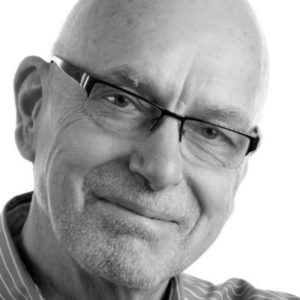Geoff Trickey is the founder and Managing Director of PCL, a business psychology consultancy that specialises in personality and human factor risk assessments. Here, SHP speaks to Geoff about the ‘human risk factor’ and how to develop a positive health and safety culture.
What first interested you in health and safety?
“Our interest in risk developed initially through our consultancy work in the wealth management, insurance and finance sectors. It was evident how challenging it is to quantify risk and predict outcomes. It was also apparent that the human contribution and risk psychology weren’t being considered. As we developed the concept of Risk Type working across many sectors, we began to appreciate that our approach also had a role to play in H&S.”
What issues are there with traditional health & safety techniques?
“H&S approaches nearly always involve ‘blanket’ approaches that emphasise procedures, processes and regulation rather than human factors.”
How does psychology and health & safety overlap?
“Everyone has their own distinctive risk disposition which is deeply rooted in their personality. To be most effective in a work environment, they need to understand how this influences their behaviour and decision-making. If you know your own biases you can properly take personal responsibility – that applies from the boardroom to the shop floor.”
Your talk focuses on the ‘Human factor risk’. Could you explain what that is?
“Human factor risk is about the unique balance every individual strikes between prioritising danger and opportunities. This balance influences everything from how a person manages their work, money, relationships and recreational interests to how they drive and cross the road.”
You propose that risk can only really be addressed through personal responsibility. What does that mean for the average health & safety culture within a company?
“H&S strategies strive to choreograph the behaviour of employees to eliminate unwanted variation in the way things are done. Failure to reduce safety incidents encourages risk managers to further tighten procedures. Consequently, experience, expertise, discretionary decision-making, innovation and even common sense may be discounted. This erosion of personal autonomy comes at a price in terms of employee engagement, job satisfaction and loyalty.”
How do you assess a worker’s disposition for risk?
“Our assessment techniques assign each individual to one of eight Risk Types. Each of these has distinctive risk dispositions that influence the perception of risk, reaction to risk or uncertainty, readiness to take risks and decision-making.”
Are business culpable for workplace accidents if risk comes down to the employee’s disposition for risk?
“Safety at work has to be everyone’s responsibility. Management’s job is to foster a positive, cooperative attitude towards work place safety – a safety culture based on mutual respect and empowerment rather than blind obedience.
The objective is to maximise safety and eliminate safety incidents and this is best achieved in the context of mutual respect and cooperation. Traditional H&S procedures run the risk of being viewed by the workforce as a way of assigning blame and shifting responsibility from management to the shop floor. Whether or not that is true, it is not a successful approach from the employee commitment and productivity perspective.”
How can a business prepare for risk using these techniques?
This is an organisational change question and organisational change has to start from the top – with the board, executives and senior management and cascaded down to the shop floor.
Much is being made of the role of mental health in health and safety. What is your opinion on the matter?
“Mental health challenges are best addressed within a ‘person centric’ work environment where individual differences are embraced and accommodated. This is the philosophy behind our ‘Risk Type Maturity Model’ and the policy of investing in human capital.”
What can businesses do to improve their health & safety practices?
“H&S takes on many different forms and faces a wide variety of challenges. The one constant is that it deals with people and their safety. People differ hugely and this variety is the great asset of our species.
Success in business is best achieved by harnessing human talent and winning respect, loyalty and commitment. Whatever the challenge, businesses flourish when the workforce is on-side and enthusiastic about the work they do.”
Geoff set up PCL in 1992 and has overseen its continuous growth to establish its current global presence. He is a Chartered Psychologist, a Fellow of the Royal Society of Arts and an Associate Fellow of the British Psychological Society. Prior to establishing PCL, he was Honorary Research Fellow at University College London (UCL) and European Manager for The Psychological Corporation (San Antonio, USA).
The Safety Conversation Podcast: Listen now!
The Safety Conversation with SHP (previously the Safety and Health Podcast) aims to bring you the latest news, insights and legislation updates in the form of interviews, discussions and panel debates from leading figures within the profession.
Find us on Apple Podcasts, Spotify and Google Podcasts, subscribe and join the conversation today!


